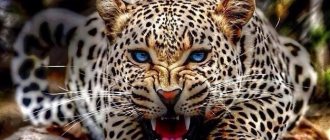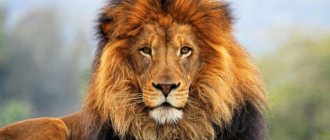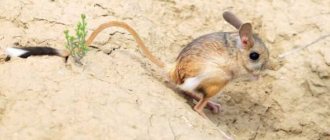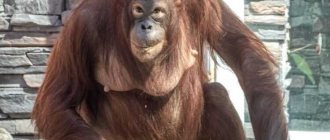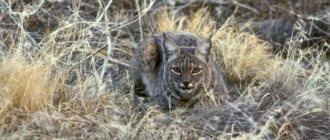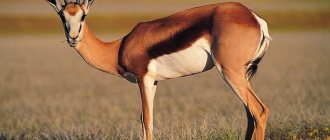№1
There are three types. The first is Equus quagga, also known as Burchellova. The second is Equus zebra, also known as Mountain. And the third species is Equus grevyi, also known as Grevy's Zebra. Burchellova includes 6 subspecies and is the most common species. Its population is around 750 thousand individuals. The Mountain breed differs from the Burchell breed in that it has a white belly, smooth coat and less wide stripes. Today, the mountain is classified by the IUCN as a vulnerable species.
As for Grevy, this is the most massive species. Also, it is the rarest. Classified as Endangered by the IUCN.
This is not the best animal to domesticate.
Zebras are much smaller than horses, so riding them is not a good idea. People are too heavy for them, and therefore the animal will get tired very quickly, and it runs the risk of serious spinal injuries. Zebras are also very aggressive. They can fight each other to the death and can aggressively attack people. There are known cases when they beat lions to death.
№2
Their black and white stripes are not only decorative, but also perform a number of important functions. They help the animal camouflage itself from predators. Also, research conducted by scientists has shown that such “camouflage” protects zebras from annoying insects.
It is worth noting that each zebra has its own unique pattern (remember the cartoon Madagascar 2, when Alex was looking for Marty). There are no zebras in nature whose patterns are similar to each other. It's like a person's fingerprints.
Today it is not really known whether zebras can distinguish each other by their stripes, but scientists are inclined to believe that babies can find their mother based on her pattern.
What do zebras eat?
Zebras are exclusively herbivores. The basis of their diet is green grass, foliage of trees, shrubs, and young shoots. If there is a lack of food, they can be content with roots and tree bark.
In wild nature
To satisfy the body's need for calories, the striped horse has to chew most of the day.
Animals depend on water sources. To live a normal life, a zebra must drink at least once a day. This issue is especially critical for pregnant and lactating females. During the dry season, reservoirs often dry up. In search of moisture, animals dig deep holes. If this also fails to reach water, the herd will be forced to migrate.
In zoo
Zoo staff try to bring the diet of their striped animals as close as possible to the natural diet. But feeding animals with bread, chips, and sugar cubes is not only undesirable, but quite dangerous. This can trigger the development of serious diseases.
№5
The female's pregnancy lasts 12-13 months. The baby that is born is covered with soft fur, not with black and white stripes, but with brown and white ones. The stripes turn black and white at approximately 4 months of age.
A newborn baby can walk immediately after birth, and after an hour can run, as noted earlier. Such rapid development is simply necessary for zebras, since they constantly move so as not to fall into the clutches of a predator. A slow child simply would not survive, since zebras, unlike hippos, rhinoceroses or elephants, cannot protect him with their strength.
Here are a few facts you may not know about these striped animals.
1. They are actually white with black or dark brown stripes. However, the skin underneath the fur is black.
2. There are different types of zebras, which differ in the shape of their stripes. Animals that live in the mountains usually have vertical stripes on the neck and body and horizontal stripes on the legs.
3. While running, animals move in a zigzag. This makes it harder for a predator to catch them.
4. The pattern on the zebra’s body is special and is not repeated in any other individual. This makes them as unique as snowflakes.
5. The black and white striped pattern of their cover is a good protection from insects that nature has given them. Horseflies and other bloodsuckers stay away from it.
6. Zebras live in herds.
7. Representatives of national American culture regard zebras as a symbol of balance and confidence in the journey.
8. The Swahili word for zebra is punda milia.
The man thought he got a mini-pig: the pet “did not meet” his expectations
How to determine when you can collect birch sap: rely on the weather
Seedlings from old seeds: chamomile tea will “wake everyone up”
9. The Romans used zebras to pull carts for circus performers.
10. In Roman circuses, the zebra was usually called "tiger-horse", or "horse-tiger".
№8
Males very often enter into skirmishes with other males for the right to reproduce. As we described earlier, zebras gather in small groups of 7-10 individuals, which are part of a large herd of 1000 or more animals. Groups include females and young offspring, led by just one male, who has the right to mate with the females of his group. But often other, lonely males want to lead the group. This leads to frequent conflicts, during which males inflict severe physical damage on each other.
A few more facts...
11. If they encounter predators, they form a semicircle and attack or push them back if they come closer. They also surround an injured family member to protect them if the need arises.
12. The mother zebra isolates the foal from other members of the herd for several days until he gets used to her smell, voice and appearance.
13. Zebras in a herd have their own hierarchy. The male takes the lead, followed by a "harem" (group of females).
14. If the herd travels, then all the individuals are led by the male. At the same time, he lowers his head low and moves his ears back.
15. Zebras gather together to confuse predators that do not have color vision (for example, lions).
16. Zebras are one of the few mammals that are (commonly believed) to have color vision.
17. In fact, zebras are not tall; their height can reach from one to one and a half meters.
18. Grevy's zebra is named after French President Jules Grevy (1882), who received it as a gift from the Emperor of Abyssinia.
19. Another name for Grevy's zebras is imperial zebras.
20. The speed of a zebra is 65 km/h.
№10
They have excellent eyesight and hearing. Scientists believe that they, like humans, see everything in color. Since zebras have eyes located slightly on the sides of their heads, they have a wider horizon than humans. They see not only in front of them, but also what is happening on each side. In addition, they have good hearing. Like horses, they can turn their ears in different directions in order to understand where a sound is coming from.
We also recommend reading: Interesting facts about elephants
And yet they are black with white stripes
Visually, it may seem that this is not at all the case, because there are more white areas on the animal’s fur. The almost completely white belly is especially disconcerting. But under the fur, zebras have black skin. But that is not all. In the early stages of pregnancy, a certain protein is responsible for the black color of the embryo's coat. Over time, part of it is destroyed, due to which babies are born black and white. However, there have been cases where the destruction of this protein did not occur during intrauterine development, and therefore almost completely black cubs were born.
Photo: Mariola Grobelska/Unsplash
Brief description of the zebra animal
- Class: mammals
- Lifespan: 25 years
- Pregnancy from 12 to 14 months
- Number of cubs at birth: 1
- Birth weight 25 to 40 kg
- Mature age: 3 to 6 years
- Size: height from 1.3 m to 1.5 m
- Weight from 250 to 400 kg
The thinnest skin
Spiny Mice - Masters of Regeneration
Spiny Mice
, living in Africa, have the thinnest skin in the world.
Moreover, their skin boasts another amazing feature.
The delicate epidermis of mice contains a large number of hair follicles. The skin of these animals is 77 percent
It tears more easily than the skin of regular mice. That is why nature has endowed the skin of these creatures with a unique ability to regenerate.
If a mouse is injured, its skin, along with hair follicles, sweat glands and cartilage, is restored in a matter of days without any scarring. In one day, the wound heals by 64 percent.
A zebra strike can kill, but everyone's stripes are different.
The blow a zebra can deliver is capable of killing a medium-sized animal. And cause serious damage to larger individuals, such as lions. Zebras do not have the instinct to mate only with members of their own species. Therefore, a zebra can easily mate with donkeys and horses. Their offspring will be the so-called zebroids
. Very funny animals that look like a zebra, but are much smaller in size. The colors of such animals can vary significantly.
From the outside it may seem that all zebras have the same stripes. However, it is not. Their stripes, like human fingerprints, are strictly individual for each individual. Monochromatic zebras are a surprisingly rare sight. This is considered a genetic mutation. Just like albinos animals. It is difficult not to mention the fact that zebras do not have a specific biorhythm and their activity occurs both during the daytime and at night.
There is an opinion that zebras are one of the least intelligent equids. In appearance, it resembles both a horse and a sheep under its amazing colors. Despite their external clumsiness, they are very fast animals and can reach speeds of up to 64 km per hour! Just imagine a striped animal running at such speed, isn’t it surprising?
Zebras are one of the calmest and most peaceful animals. They live in small herds that can number from 5 to 10 animals. The average zebra in the wild lives 25 years. Life expectancy in enclosures and zoos is higher, up to 40 years. There is always a main male in the herd, who watches for danger and protects the herd from attacks by wild animals. The rest at this time are grazing peacefully from time to time, looking at him. “Sentries” also remain on guard at all times, and in case of danger they sound an alarm for the herd.
What is zebra skin and what is its skin used for?
Zebra skin is a popular decorative element. Whole skins are used as large rugs and colorful tapestries, as well as in the making of sofas, ottomans or cushions. Well, and, of course, various types of exotic zebra leather goods - men's and women's bags, travel bags, wallets and purses - stylish, sophisticated accessories for any wardrobe and sought-after additions to the ladies' boudoir!
Zebra leather can be used in many fields, but it is mainly used in high-end furniture, upholstery, shoes, bags, designer rugs and many other accessories and household items.
Features of tanning zebra leather to achieve its softness and shine
Our products are made from zebra skins tanned in the most reputable tanneries in South Africa, the tanning process of which is well known and is of international standard. These zebra skins are very soft as they are produced using oil to soften the skin.
Fresh zebra skins are carefully tanned with lots of extra oils, giving your rug the perfect strength and flatness for its entire lifespan, unlike Tanzanian tanning, which will only allow your rug to sit on the floor for a few months.
Zebra habitat in the wild
They have more than one habitat: Grevy's zebras live in the low-moisture grasslands of Kenya, Ethiopia and Somalia. Mountain zebras, as their name suggests, live on the rocky, arid slopes of Namibia and Angola.
Plains zebras, which are the most abundant of the three zebra species, are found from the grasslands of East Africa to the scrub forests of southern Africa. They are among the most successful and adaptable large herbivores in Africa.
A subspecies of the plains zebra, Grant's zebra is famous for its spectacular wet season migrations in the Serengeti and where the zebra lives, up to 10,000 of the animals can be seen traveling together in herds.
Zebras are herbivores and eat mainly grass, although they may also eat some leaves and stems of bushes. They graze for many hours every day, cutting off the ends of the grass with their strong front teeth. Their back teeth then crush and grind the food. When you spend so much time chewing, your teeth wear down, so they continue to grow throughout your life.
They do not live in deserts, wetlands or tropical forests, which could make them vulnerable to climate change. As the dry season sets in and the grasses die off, these animals hit the road in search of food and water to drink from. Most are considered nomadic, with no defined territories.
The exception is Grevy's zebra. Mares, their foals and immature males wander as they please. However, if food becomes scarce, stallions will temporarily leave their territories and travel with larger herds.
Zebras: family, offspring and care
When a baby zebra is born, its stripes are not black, as you might expect, but dark brown. A newborn zebra can easily distinguish its mother from other relatives without much difficulty. The stripes, reminiscent of the color of a Bengal cat, help him in this. Offspring appear far from the herd. The mother introduces everyone to her foal only after 3 days. This gives the baby time to get used to the smell of his mother and remember her. By nature, they are very clean and always help their relatives keep each other clean. Oddly enough, these animals have a highly developed family instinct. And despite the fact that there may be enough heads in the herd, many of them live in small families.
Zebras have pink milk
. This is due to some of the feeding habits of these animals. Pregnancy lasts for zebras for 13 months. The main source of nutrition is grass and water. A zebra can consume up to 15 liters of water per day. Their stomach, due to its structure, is capable of digesting even the toughest herbs that other herbivores will not eat. They use their teeth and hind hooves to defend themselves. A distinctive feature of zebra males is the presence of sharp incisors, which they also use in defense against predators.
The thickest skin
Sperm whales have the thickest skin.
Different animals have strong and thick skin: crocodiles, rhinoceroses, hippopotamuses. For example, whale shark
can reach
up to 15 centimeters in thickness
!
However, the record holder for skin thickness can be called the sperm whale
.
The skin of this animal can be up to 35 centimeters thick
!
Considering that these creatures prey on giant and colossal squids
, with razor-sharp tentacles, then it makes sense to be so thick-skinned.
By the way, sperm whales also have the largest teeth in the animal kingdom, and they also have the largest brain volume. For comparison: the largest known shark is Megalodon
– had
17-centimeter teeth.
The sperm whale's teeth are no less long.
Crocodile skin
Crocodiles have the most sensitive skin
Crocodiles
- ferocious and bloodthirsty predators.
In their arsenal there are deadly weapons - teeth and jaws
, as well as strong armor - their skin. Crocodile skin is famous for its toughness and durability and is widely used by humans for making clothes and accessories.
In addition to the fact that the skin of these representatives of the animal world is the most durable in the world, it also has special sensors
, which no other creature can boast of.
The most powerful bites in the animal kingdom
A crocodile's snout is more sensitive to pressure and vibration than human fingertips. That is, crocodiles have the strongest sense of touch.
among any other animals.
The tubercles around the jaws and on the sides of their body are able to detect the slightest vibrations in the water. This is what makes them such good hunters.
Crocodiles have many sensors in their mouths around their teeth. For example, a mother can carefully use her jaw to help her baby hatch from an egg, and then use the same jaw to transfer it into the water without causing the slightest injury to it.
Also, crocodile skin has special chemical receptors
. Scientists believe that these receptors help predators track prey or find suitable habitat.
7 facts about zebra:
- Zebras live in packs, headed by one leader. It is always a male with his own harem of females.
- There is a hierarchical division among the females of the harem. One of them is considered the main one and leads the rest.
- A zebra baby is adapted to life much earlier than other animals. Already an hour after birth, he can gallop.
- Zebras are often depicted at watering holes. These animals really often come to water sources, because they need to drink in large quantities every day.
- When a female gives birth to offspring, she leaves the herd with the babies. Three days of solitude are necessary for the cubs to remember the smell, sound and sight of the mother.
- Only males have fangs, necessary for clashes with rivals as weapons.
- Most often, zebras spend their sleep time in a standing position. During the “quiet hour,” several sentries stand guard to prevent attacks by predatory animals.
